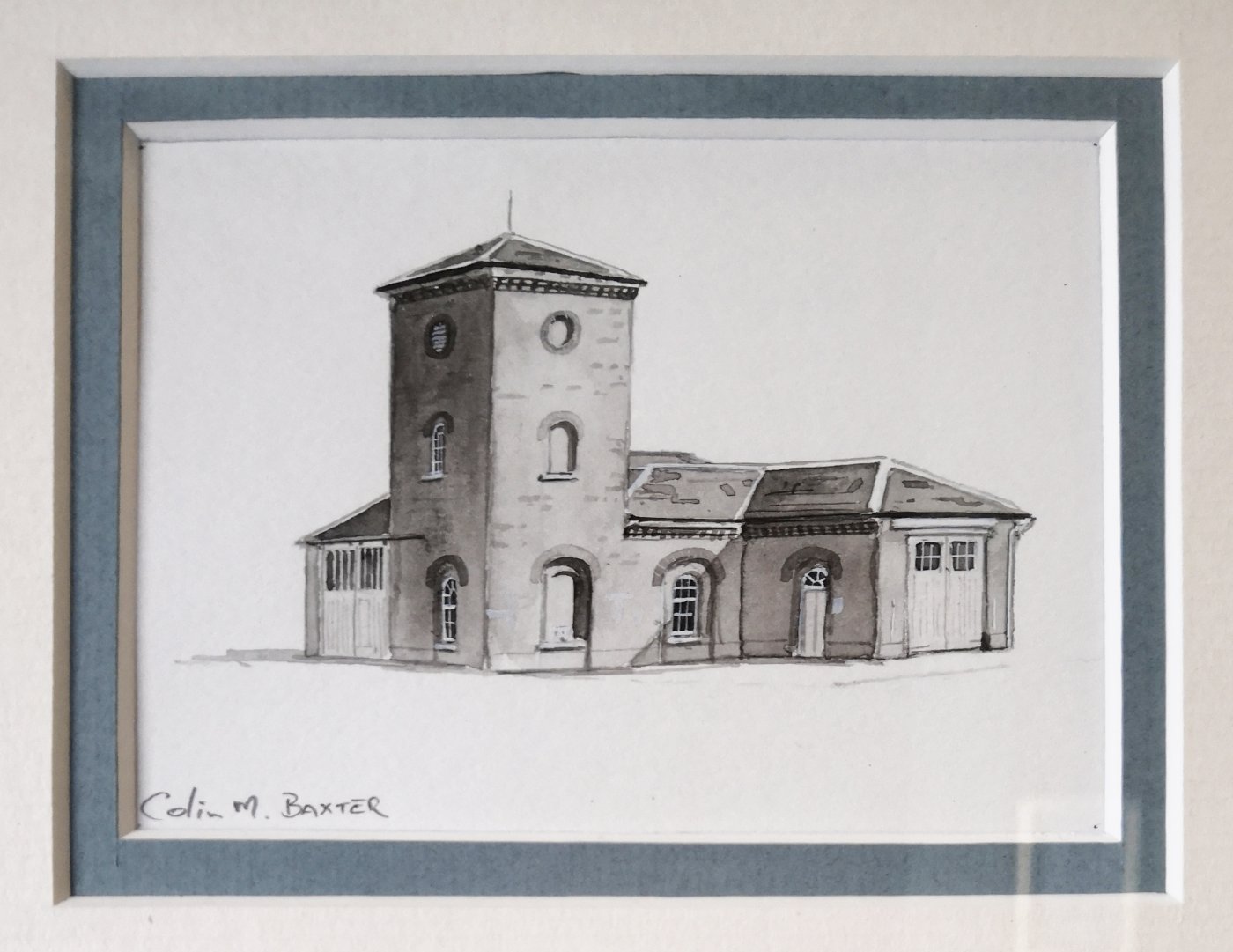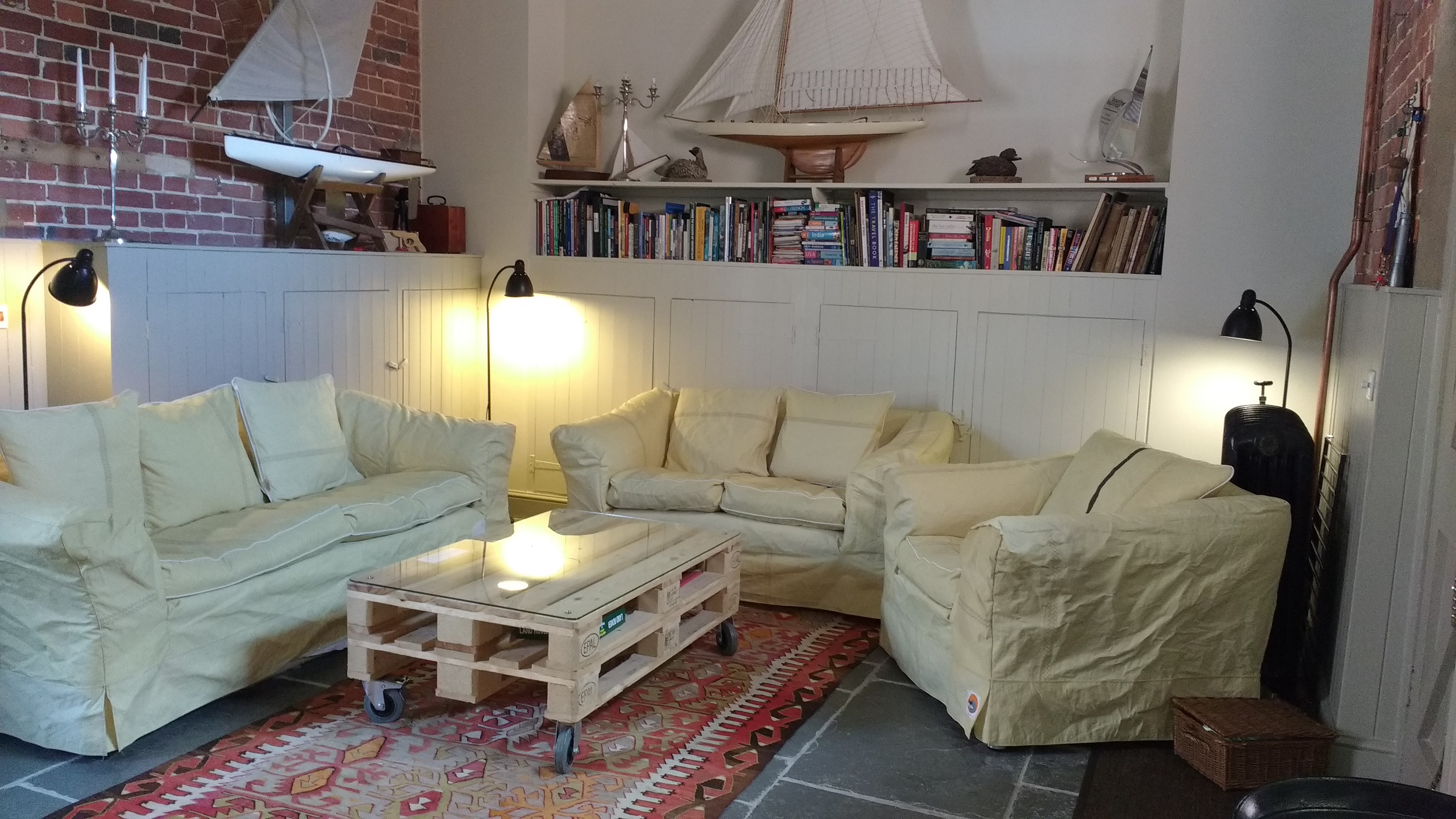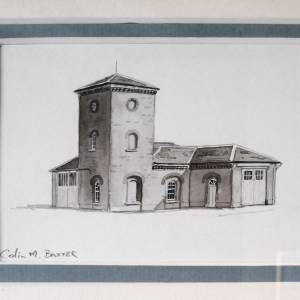
Boatshed operates from Gosport historic Engine House and Accumulator Tower
Boatshed’s HQ offices are located at the Engine House and Accumulator Tower, located in the famous naval Royal Clarence Yard in Gosport in the UK.
Our founder Neil Chapman purchased the building in 2007 to create a meeting, conference and global headquarters for the Boatshed.com organisation.
Built in 1859, the Engine House is a Grade II listed building. 150 years ago it was the main power supply facility for the British Navy, today it powers Boatshed.com, a company famous for leading the marine industry with new technology and innovation.

Royal Navy Victualling Yard
The Yard has a long history. In the 17th Century Captain Henry Player built a manor house, brewery and other buildings on the site and supplied beer to the Royal Navy, it was known as Weovill Estate. Weovill actually means well (not weevils as later thought, that are found on the ships biscuits). The brewery tapped into the sweet French water table which was excellent for brewing beer. After his death in 1711, the brewery continued to operate by family members until 1751.
In 1828 it was thought that the Royal Navy demolished Weovill Manor house to build one of only two main victualling bases for the Royal Navy, Prince William yard Plymouth and Royal Clarence Yard in Plymouth. In 1831 the yard was renamed Royal Clarence Yard after the Duke of Clarence.
In 1832 the yard supplied the Royal Navy with fresh water, salt meat, hardtack (ships biscuits) bread and rum. Royal Clarence Yard played a significant role in British industrial history due to it being one of the first large food industrial plants in the country. The yard was greatly admired also due to the exceptional quality, elegance and Italianate style of the late Georgian buildings.
During World War II the yard was damaged during bombing raids. Today it has been developed into a mixture of residential, office and retail areas and a marina.
Around 1846/7 Queen Victoria (after Osborne House was completed) had a train station/platform built on the yard and a jetty where her Royal Yacht could dock when she left the Isle of Wight for the mainland.
1846 Lord Armstrong developed the first hydraulic accumulator which was a crane powered by water. In 1852 Armstrong built a hydraulic accumulator tower in Grimsby to power the dock gates and sluices.
In 1859 the Royal Navy used this new technology to build a Hydraulic accumulator tower and Engine House within the yard to provide power.
The building was designed by Andrew Murray, Chief Engineer of Portsmouth Dockyard, under the direction of Col. G T Greene and is made of red engineering bricks in English bond, with slate roofs made with lead dressings. By January the plans were finalised, February the building started, in April the 40hp steam engine was installed and by September it was fully operational.
The new Engine House and Accumulator tower (today known as The Engine House) provided power to operate the fresh water pumps which powered 4 waterfront cranes, grinding wheels in the Mill and Bakery buildings and fed fresh water throughout the yard.
It worked by a cast-iron cylinder situated in the tower, weighing approx 100 tons which consisted of scrap metal and concrete. The container would be pushed to the top of the tower by a 40 hp steam engine. When extra power was needed, the cylinder would drop slowly, taking around 24 hours creating power. The steam engine helped maintain the water pressure at 700 psi and to raise the steel container back to the top of the tower.
In 1862 The Engine House needed a more powerful steam engine. A 60 hp steam engine was installed at a total cost of £775.00, £375.00 more than the original quote.
Feeding the Royal Navy
Royal Navy hardtack was made by machine at the Royal Clarence Yard, stamped with the Queen's mark and the number of the oven in which they were baked. Biscuits remained an important part of the Royal Navy sailor’s diet until the introduction of canned foods -- one of the key factors of the navy's success was having a reliable supply of quality preserved food for ships to take to sea for up to six months. A total of 50,000 ships biscuits/hardtack was made per hour, and one ton of bread was baked per hour.
Royal Clarence Yard provisioned vast quantities of food for the thousands of troops anchored at Spithead for the D-Day landings. The yard was also involved in victualling operations for the Falklands conflict in 1982, when it would ship supplies to RAF Brize Norton to be flown to the front line.
The yard was decommissioned in early 1990’s
The Engine House powers Boatshed

Painting of The Engine House by Colin Baxter marine water-colour artist
The Engine House is used as a training facility for Boatshed which trains many new Boatshed brokers from overseas and a support hub for the 150 brokers world-wide.
The larger interior space retains the soft coloured red bricks, added wood panelling and flagstone floors. Adding copper pipes for the heating and traditional cast iron radiators throughout.
The Engine House is one of several important historic buildings in Royal Clarence Yard, including the Pump House (now a café), the old forge, Flagstaff Green, the Ceremonial Arch, the Granary and Bakery and Slaughterhouse, all of which are Grade II listed by English Heritage.
Boatshed, which introduced high-tech to the boat brokerage industry, centre’s its operations at the Engine House while building its international network which now sells more boats per year than any other broker, thanks to its use of Artificial Intelligence and Predictive Analytics. But Boatshed maintains the traditional values of transparent sales and committed service that do indeed hark back to the 19th century.
It's a great example of how an old industrial building can be converted to a home and headquarters for business use, two industries 150 years apart, steam and soot compared with today's industry of the cloud, technology of machine learning.
The perfect blend of old and new technology.


